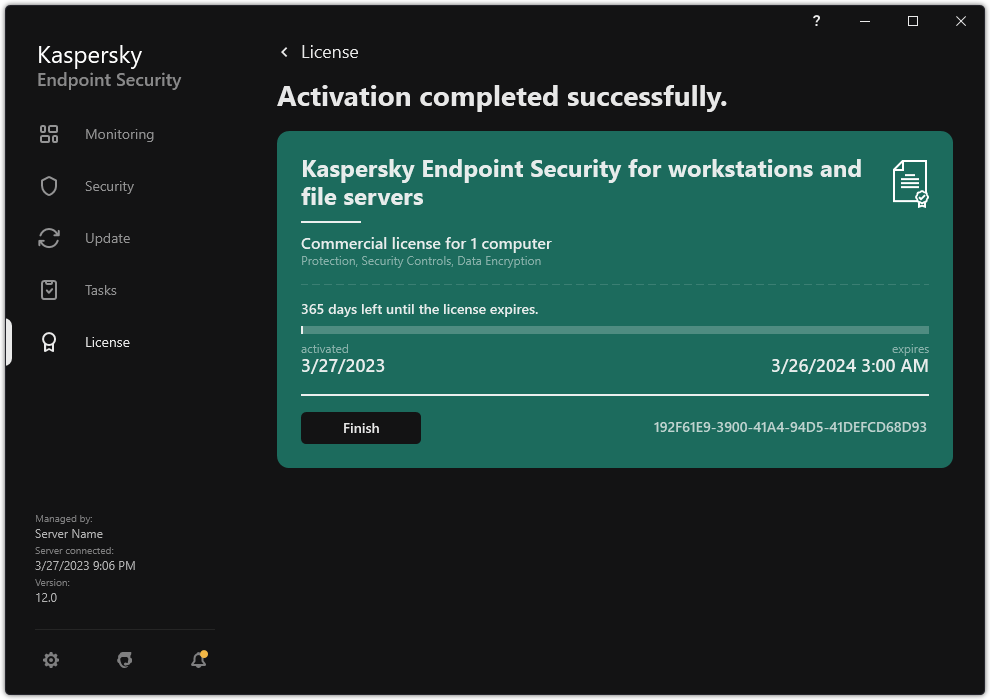Viewing license information
To view information about a license:
In the main application window, go to the License section (see the figure below).

Licensing window
The section displays the following details:
- Key status. Several keys can be stored on a computer. There are two types of keys: active and reserve. The application cannot have more than one active key. A reserve key can become active only after the active key expires or after the active key is deleted by clicking Delete.
- Application name. Full name of the purchased Kaspersky application.
- License type. The following types of licenses are available: trial and commercial.
- Functionality. Application features that are available under your license. Features may include Protection, Security Controls, Data Encryption, and others. The list of available features is also provided in the License Certificate.
- Additional information about the license. Start date and end date of the license term (only for the active key), remaining duration of the license term.
License expiration time is displayed according to the time zone configured in the operating system.
- Key. A key is a unique alphanumeric sequence that is generated from an activation code or a key file.
In the Licensing window, you can also do one of the following:
- Buy license / Renew license. Opens the Kaspersky online store website, where you can purchase or renew a license. To do so, please enter your company information and pay for the order.
- Activate the application using a new license. Starts the Application Activation Wizard. In this Wizard you can add a key using an activation code or a key file. The Application Activation Wizard allows you to add an active key and only one reserve key.